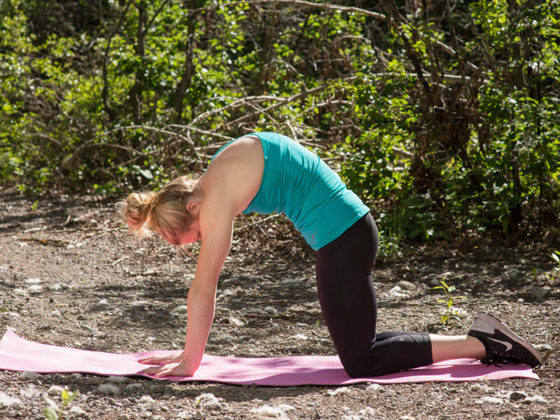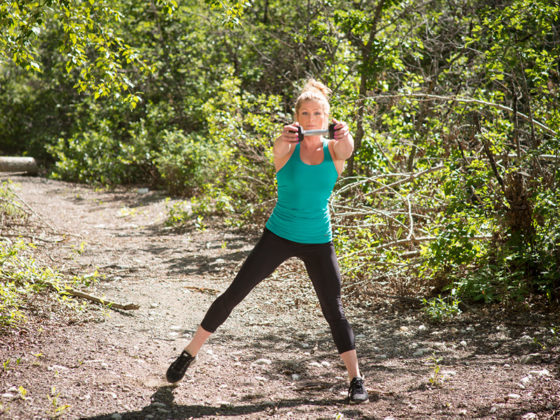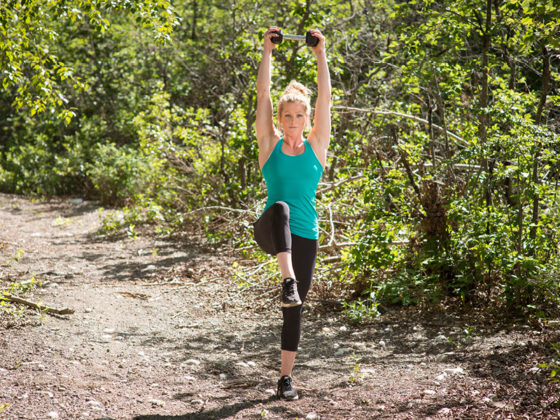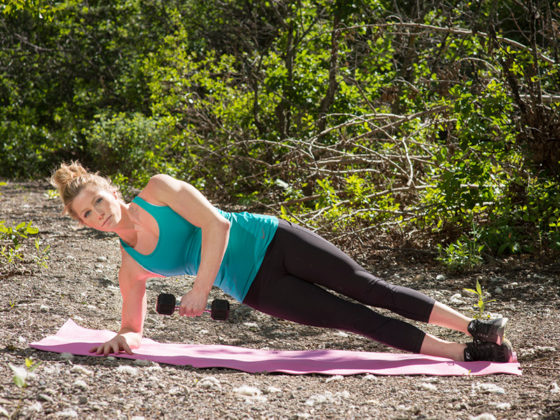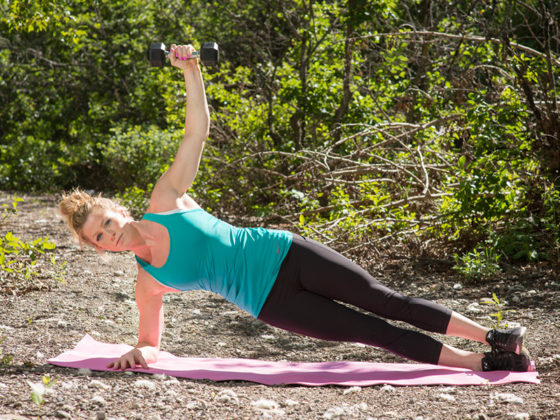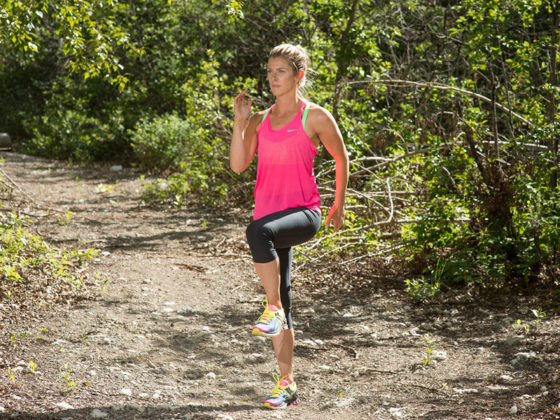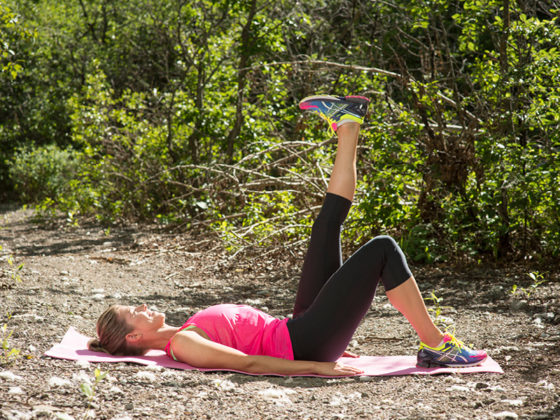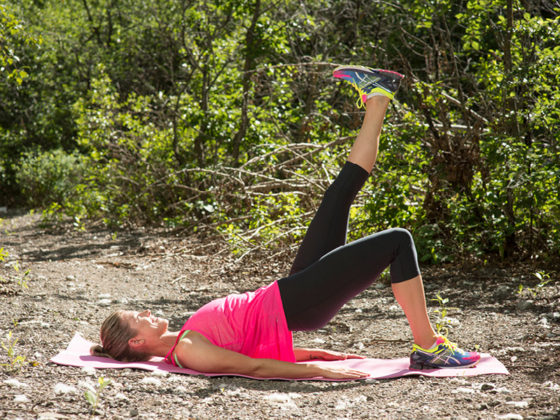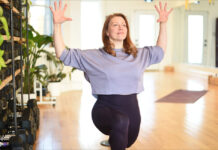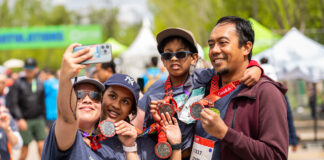
Trail runners face the challenges of a unique training environment. Because the terrain you love is unpredictable and uneven, you need an adaptable, agile body. By focusing on strengthening your glutes, improving lateral hip endurance and overall balance and agility you’ll be hammering the trails in no time.
The following workout includes four exercises designed to improve strength, endurance and balance in some of the key muscle groups trail runners need to target. Because many of you spend your days sitting at a computer or standing for long periods of time, this workout will improve alignment and function of key muscles to be ready to hit the trails.
Strength
The hills and changing elevation of trail running means you need strong hips. Focus on strengthening your glutes to help power up those serious inclines you’ll be facing.
Endurance
Your sport is not a sprint, so you need lateral hip endurance to hold up over kilometres, not just metres, of downhill running and lateral side-stepping to avoid roots and rocks.
Balance
To stay on your feet and be reactive to the changing forest floor, you need to focus on balance. Proprioceptors are constantly telling your body where it is in space. The good news is balance is one of the fastest adapting characteristics of fitness… if you work on it.
Warm-Up
This is the ideal workout to tack onto the end of a short trail run. Keep a couple of dumbbells in the trunk of your car and you’re good to go. If you are going to do this as a stand-alone workout, be sure to warm up aerobically by running for five minutes.
- Bodyweight squats x 20.
- Side shuffles x 20 per side.
- Leg swings (hands on wall or tree) x 20 per leg.
- Cat/cow x 20 (see photos below).
Workout
Treat 1A and 1B as a superset. This means you’ll alternate through each exercise before moving on to a superset using 2A and 2B.
1A. Side lunge and one-leg balance
Do keep your heel firmly pushed into the ground and your knee tracking in line with your toes.
Avoid rounding your back, hunching your shoulders and forgetting to stick your butt out.
- Take a wide lateral lunge to the side and let your hips hinge to allow your glutes to stick out behind you.
- Push off from your outside foot to balance on your other leg with knee lifted at 90 degrees.
- Hold a dumbbell in both hands to increase difficulty.
- Complete 2-3 sets of 12-15 reps per leg.
1B. Side plank with reverse flys
Do keep your hips pulling away from the ground and ribs stacked over hip bones.
Avoid popping your ribcage outward and letting your hips drop to the floor.
- Place your forearm on the ground, keeping your elbow stacked under your shoulder. Stack feet and hips on top of each other.
- Perform a reverse fly with your top arm, keeping your elbow slightly bent.
- Complete 2-3 sets of 12-15 reps per side
2A. Single leg squat with hop
Do keep your knee tracking in line with your middle toes.
Avoid using only your knee joint. Hinge at your hips, too.
- Stand on one leg and bend at your knee and hip to perform a deep single leg squat with the opposite leg behind.
- Drive up from the squat and hop as high as you can go, landing on the same leg.
- Complete 2-3 sets of 12-15 reps per leg.
2B. Single leg hip lift
Do firmly push your heel into the ground.
Avoid popping your ribcage or arching your low back.
- Lie on your back and press one heel into the ground while extending your other leg toward the sky.
- Use your glutes and hamstrings to lift your hips up and lower back to the ground.
- Complete 2-3 sets of 12-15 reps per leg.



